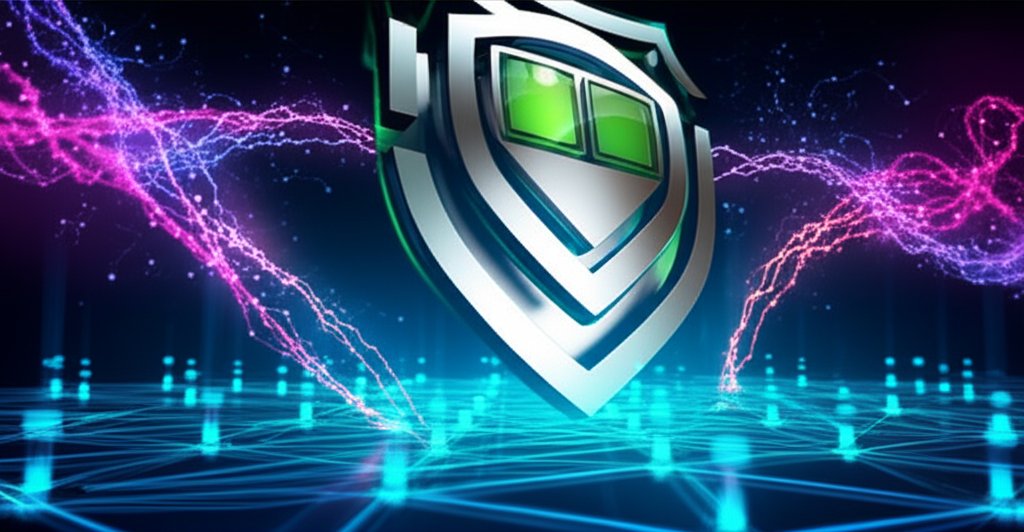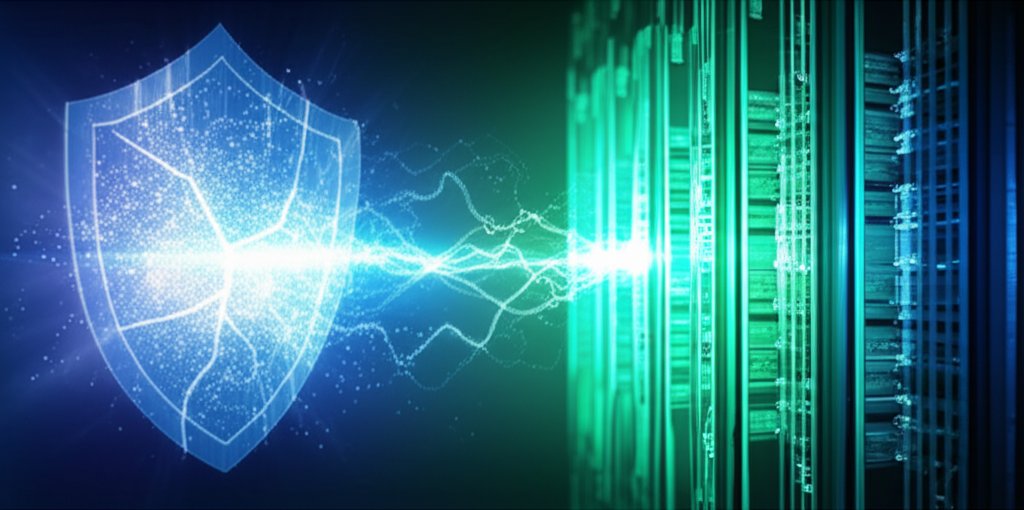In our increasingly connected world, your digital identity is arguably as important as your physical one. We use it for everything from online banking to social media, often without truly understanding the inherent risks. But what if the very foundations of how we protect that identity were about to change? What if a looming threat could render today’s strongest encryption useless? That’s the challenge the “Quantum Age” presents, and it’s why understanding concepts like Decentralized Identity (DID) – think of it as a digital passport that you truly own and control – and Post-Quantum Cryptography (PQC) – a new generation of cryptographic ‘locks’ that even future quantum computers can’t pick – isn’t just for tech experts anymore. It’s for you, for me, and for every small business navigating the digital frontier.
I know, those terms might sound intimidating at first glance. But my goal today isn’t to turn you into a cryptography expert. Instead, it’s to empower you with knowledge, to help you understand the current risks and future challenges, and most importantly, to show you practical steps you can take right now, as well as what to watch for in the future, to guard your digital self. We’re going to explore how these advanced concepts fit into the everyday cybersecurity practices you already know, and why their emergence makes those practices even more critical.
Understanding Today’s Risks and Tomorrow’s Quantum Threats
Let’s be honest, your data privacy is already under siege. Most of our digital lives are built on a centralized model. Think about it: your social media logins, your bank accounts, even many government services, all rely on massive databases owned and managed by a single entity. These central authorities hold vast amounts of your personal information, making them prime targets for cybercriminals.
Imagine entrusting your entire physical identity – your driver’s license, passport, birth certificate, and bank cards – to a single, giant safe managed by a third party. If that one safe is breached, everything is exposed. This is the essence of the “centralized identity trap”: one breach, and suddenly, your name, email, password, and maybe even your financial details are out there for anyone to exploit. We’ve seen this happen countless times, haven’t we? You’re often renting, not truly owning, your digital identity, entrusting your precious data to someone else, hoping they’ll protect it. Beyond the immediate breach risk, there’s also the constant data harvesting and profiling happening behind the scenes, often without your full awareness or explicit consent. Companies collect, analyze, and monetize your digital footprints, painting a detailed picture of who you are, what you like, and what you might buy.
Now, imagine a new, unprecedented threat on the horizon: Quantum computing. These aren’t just faster computers; they operate on entirely different principles that could shatter current cryptographic defenses. While we’re not there yet, quantum computers have the theoretical power to break today’s standard encryption algorithms – the very ones protecting your online banking, your VPNs, and virtually all secure communications. This isn’t science fiction; it’s a looming reality. The “harvest now, decrypt later” threat is particularly chilling: sensitive data intercepted today, even if encrypted, could be stored and decrypted by powerful quantum computers in the future. This means your current sensitive communications aren’t just secure for now, but potentially vulnerable down the line. It’s a significant, long-term shift in how we must think about data security.
Password Management: Fortifying Your First Line of Defense
Immediate Action: Strong Password Practices
Even with advanced threats on the horizon, the basics still matter. A strong, unique password for every account is your fundamental safeguard. Using a reputable password manager isn’t just a convenience; it’s a necessity. It generates complex passwords you don’t have to remember and stores them securely. This significantly reduces your vulnerability to credential stuffing attacks and breaches that recycle passwords across multiple platforms.
Future Outlook: Decentralized Identity’s Role
Looking ahead, Decentralized Identity (DID) aims to transform this landscape. Imagine a world where you don’t need dozens of passwords. Instead, you’d use a single, user-controlled digital identity, secured by cryptography you own. This isn’t about eliminating security; it’s about shifting control. Your DID could serve as a portable, cryptographically secure key to various services, dramatically reducing “password fatigue” and the attack surface associated with centralized password databases.
For these future DID-based authentication systems to be truly resilient, they’ll need Post-Quantum Cryptography (PQC). PQC ensures that the underlying cryptographic “locks” securing your decentralized identity and its associated digital proofs can withstand attacks from quantum computers. So, while we’re still using passwords today, it’s wise to anticipate a future where more robust, quantum-safe authentication methods, built on principles of user control, could take their place.
Two-Factor Authentication (2FA): Strengthening Your Digital Gates
Immediate Action: Activating Robust 2FA
Two-Factor Authentication (2FA) is your essential second layer of defense. It means even if a cybercriminal gets your password, they’d still need a second piece of information – something you have (like your phone) or something you are (like your fingerprint) – to access your account. Enabling 2FA on all your critical accounts is a non-negotiable step for immediate security. Look for app-based 2FA (like Authenticator apps) or hardware keys, as they’re generally more secure than SMS-based codes, which can be vulnerable to SIM-swapping attacks.
Future Outlook: 2FA with Verifiable Credentials
In a DID-enabled future, 2FA could evolve significantly. Instead of relying on a centralized service to send you a code, your Verifiable Credentials (VCs) – digital proofs you own – could serve as robust second factors. For instance, instead of an SMS code, your digital wallet might present a cryptographically verified claim that only you can authorize. This means fewer points of failure and greater control over your authentication process.
Crucially, the integrity of these VCs and their cryptographic signatures would need to be quantum-resistant. PQC algorithms would protect the underlying mathematics that prove your VCs are authentic and haven’t been tampered with. This ensures that even in the quantum age, your decentralized 2FA methods remain impenetrable.
VPN Selection: Protecting Your Connection in a Quantum-Aware World
Immediate Action: Choosing a Secure VPN
A Virtual Private Network (VPN) encrypts your internet traffic and masks your IP address, protecting your online activities from snoopers, especially on public Wi-Fi. When choosing a VPN, look for providers with a strong no-logs policy, audited security practices, and robust encryption standards. This ensures your online movements are kept private from your ISP and potential eavesdroppers.
Future Outlook: Quantum-Resistant VPN Protocols
As we approach the quantum era, the encryption protocols used by VPNs will become critically important. Today’s standard encryption, like certain forms of RSA and ECC, could be vulnerable to quantum attacks. Future-proof VPNs will need to adopt Post-Quantum Cryptography (PQC) to ensure the security of their encrypted tunnels for the long term. While this is an area of active research and development, it’s something to keep an eye on as you consider your long-term online privacy strategy. Eventually, you’ll want to ensure your VPN is using quantum-safe algorithms. For now, a good VPN still offers significant protection against current threats.
Decentralized Identity, while less directly tied to VPN protocols, could play a role in how you securely and privately authenticate to VPN services. Imagine using a verifiable credential to prove your subscription without revealing your full identity to the VPN provider, enhancing privacy further.
Encrypted Communication: Keeping Your Conversations Private, Permanently
Immediate Action: Utilizing End-to-End Encrypted Apps
In an age where data surveillance is rampant, using encrypted communication apps is paramount. Services like Signal or ProtonMail offer end-to-end encryption, meaning only the sender and intended recipient can read the messages. This is a vital step for safeguarding sensitive personal and business conversations from interception and unauthorized access.
Future Outlook: Quantum-Safe Communication & Verified Identities
However, the quantum threat looms large over even these encrypted communications. If today’s messages, encrypted with current algorithms, are intercepted and stored, they could theoretically be decrypted by future quantum computers. This is where PQC comes in. New PQC algorithms are being developed and standardized to ensure that encrypted communications remain confidential even against quantum attacks. As these standards mature, you’ll want to look for communication platforms that integrate “quantum-safe” encryption. This helps protect the integrity and privacy of your conversations for the long haul.
Decentralized Identity could further enhance communication privacy by enabling strong, verifiable identification of participants without relying on central authorities. You’d know you’re talking to the right person, and they’d know it’s you, all while maintaining a higher degree of privacy about the underlying identity details.
Browser Privacy: Navigating the Web with Granular Control
Immediate Action: Hardening Your Browser
Your web browser is a primary gateway to your digital life, and it can be a significant source of privacy leaks. Hardening your browser settings, using privacy-focused extensions (like ad blockers and tracking protectors), and opting for privacy-centric browsers (like Brave or Firefox with enhanced tracking protection) are crucial steps. Regularly clearing cookies and browsing history also helps reduce your digital footprint and the data collected about you.
Future Outlook: DID for Selective Disclosure & Quantum-Safe HTTPS
Decentralized Identity can revolutionize browser privacy by giving you granular control over the information you share with websites. Instead of a website requesting your full profile from a centralized identity provider, you could use selective disclosure from your DID wallet to present only the specific claim needed (e.g., “I am over 18” without revealing your birthdate or name). This drastically minimizes the data collected about you as you browse.
Post-Quantum Cryptography will also play a role in browser privacy by securing the HTTPS connections that form the backbone of the web. As browsers and web servers adopt PQC, your browsing sessions will be protected against quantum adversaries, ensuring that your data isn’t exposed during transit, regardless of future advancements in computing power.
Social Media Safety: Reclaiming Your Narrative and Data
Immediate Action: Mastering Privacy Settings
Social media platforms are notoriously complex when it comes to privacy. Taking the time to understand and customize your privacy settings on each platform is essential. Be mindful of what you share, who you connect with, and the data permissions you grant to apps. Remember, once something is online, it’s very difficult to retract fully, so exercise caution.
Future Outlook: DID for Verified, Private Social Interactions
Decentralized Identity offers a powerful way to reclaim control over your social media presence. Imagine a world where you don’t log in with a Facebook or Google account, but with your own DID. You could selectively prove aspects of your identity (e.g., “I am a verified user,” “I live in X city”) without giving the platform a comprehensive profile. This could lead to a significant reduction in data harvesting by social media giants and potentially help combat issues like fake accounts by enabling verified, yet privacy-preserving, identities.
Furthermore, PQC would secure the underlying cryptographic operations of these platforms. This ensures that even as social media evolves to potentially incorporate DID, the cryptographic integrity of your posts, messages, and identity claims remains secure from quantum attacks.
Data Minimization: The Ultimate Privacy Principle
Immediate & Future Impact: The Power of Less
The principle of data minimization is simple but profoundly effective: collect, store, and share only the absolute minimum amount of personal data necessary for a specific purpose. This dramatically reduces the risk of data breaches, unauthorized profiling, and future misuse of your information. If the data isn’t there, it can’t be stolen or abused. It’s a proactive defense that pays dividends.
This is precisely where Decentralized Identity truly shines and supercharges the data minimization principle. With Verifiable Credentials (VCs) and selective disclosure, you gain unprecedented control. Instead of giving a website your full driver’s license to prove your age, your DID wallet could simply present a VC that cryptographically confirms, “This person is over 18.” The website gets the specific piece of information it needs, and you keep the rest of your personal data private. This inherent design of DID radically supports data minimization, putting you firmly in the driver’s seat of your personal information.
Secure Backups: Future-Proofing Your Digital Assets
Immediate Action: Encrypting Your Backups
Backing up your important data is a fundamental cybersecurity practice. Hard drive failures, accidental deletions, or ransomware attacks can all lead to devastating data loss. But simply backing up isn’t enough; those backups must be secure, especially as we look to the future. Encrypting your backups, whether they’re stored locally or in the cloud, is vital to protect them from unauthorized access.
Future Outlook: Quantum-Safe Encryption for Archived Data
Post-Quantum Cryptography (PQC) will be absolutely essential for future-proofing these encrypted backups. If your backups are encrypted with today’s standard algorithms, they could be vulnerable to decryption by quantum computers in the future. As PQC standards are finalized and implemented, you’ll want to ensure your backup solutions are using these “quantum-safe” algorithms. This ensures that your archived data remains confidential and accessible only to you, regardless of how computing power evolves in the decades to come.
Decentralized Identity could also play a role here by securely managing access control to your encrypted backups. Imagine using a verifiable credential to authenticate and authorize access to your cloud storage, adding an extra layer of user-centric security and control.
Threat Modeling: Preparing for an Evolving Digital Landscape
Thinking proactively about potential threats is a powerful way to improve your security posture. Threat modeling involves asking: “What assets do I need to protect? Who might want them? How could they try to get them?” It helps you identify vulnerabilities and prioritize your defenses effectively. As the digital landscape shifts with the advent of quantum computing and decentralized technologies, our threat models absolutely need to adapt.
Decentralized Identity and Post-Quantum Cryptography aren’t just buzzwords; they represent fundamental shifts in how we can approach digital security. DID empowers you with control over your identity, moving away from vulnerable centralized systems. PQC protects the cryptographic foundations of our digital world from a looming, powerful threat. Together, they offer a robust framework for a more secure and private future. Understanding these shifts and proactively incorporating them into your personal and business security strategy is a crucial step toward true digital resilience.
The Path Forward: A Decentralized and Quantum-Safe Future
The journey to a fully decentralized, quantum-safe digital world is ongoing, but the direction is clear: greater user control and robust, future-proof security. While technologies like Decentralized Identity and Post-Quantum Cryptography are complex, their core benefits – enhanced privacy, reduced breach risks, and protection against future threats – are undeniable. By understanding these concepts and integrating them into your broader cybersecurity strategy, you’re not just reacting to threats; you’re building a proactive, resilient defense for your digital future.
Protect your digital life! Start with a reputable password manager and strong 2FA today.









